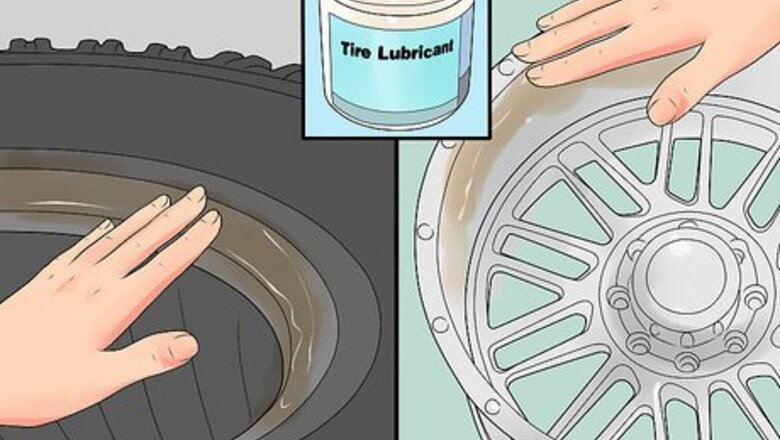
views
Using a Tire Mounting Machine
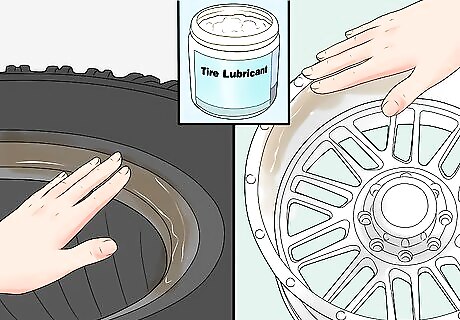
Lubricate the bead and rim edge. Spray the tire lubricant liberally onto the inner lip of the tire (referred to as the bead) as well as the outer edge of the rim to make it easier to seat the tire on the rim to be inflated. If your lubricant came in a jar rather than a spray bottle, apply the lubricant to the same edges using a cloth or wooden dowel. Don't use dish soap or automotive grease instead of lubricant. The dish soap does not offer enough lubrication and grease can be extremely difficult to clean off of the wheel. You can purchase tire lubricant at your local auto parts store.
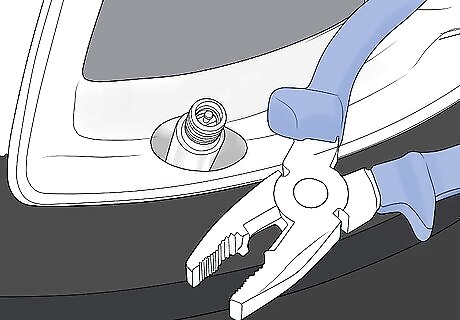
Install the valve stem. If there is no valve stem already on the wheel, you'll need to put one in to inflate the tire once it's mounted. There will be one hole on the interior of the rim that passes all the way through to the outside. Insert the valve stem from the inside of the rim so it pokes out through the hole on the outside. Then use a pair of pliers to pull the stem through until it stays firmly in place. Adding a little tire lubricant to the valve stem will also help get it through. The design of the valve stem won't allow it to pass all the way through or pop out in any direction other than backward, so all you need to do is ensure it's pulled through the hole and is seated tightly.
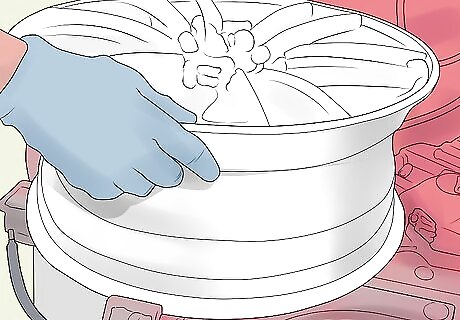
Place the rim on the tire machine. The tire machine is designed to accept the rim facing up. Set it on the machine and engage the hydraulic press that secures the rim in place from beneath by pressing the pedal associated with it. Most tire machines have two pedals: one to engage the press and another to rotate the rim. If you're unsure which pedal does which (or if there is no pedal on your particular machine) refer to the tire machine owner's manual or the manufacturer's website for guidance.
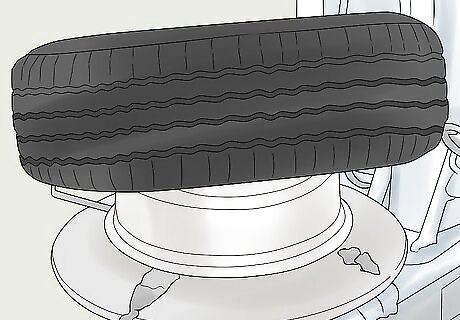
Slide the tire over the rim on an angle. Position the bottom edge of the tire lower than the top edge of the rim on one side, with the tire sitting at about a 45-degree angle. The tire should be able to sit on its own without falling off the rim. It's important to start with one bead beneath the rim's edge and enough space for the mounting arm to be slid into the gap created by the angle.
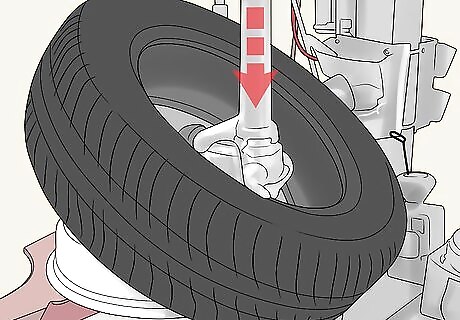
Swing the mounting arm down onto the edge of the rim. Position the mounting arm so it makes contact with the rim's outer edge in the same spot you've already angled the tire to get past. If you can't squeeze the mounting arm in at that spot, re-adjust the tire to give yourself room to get the mounting arm in. The mounting arm serves as a sort of pry bar to force the rest of the tire over the lip of the rim, so it needs to start in a place where the tire has already made it past that lip.
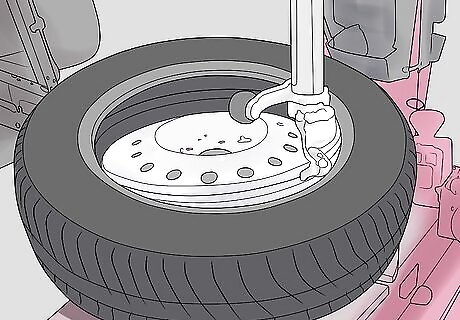
Angle the tire so the lower bead is aimed at the mounting arm. With the mounting arm in place, you may need to adjust the tire slightly so that it comes into contact with the arm as the wheel and tire rotate. In most cases, this won't require an adjustment at this point, but look things over to ensure the proper angle. Make sure the tire is positioned so that the arm presses the lip down past the rim's edge as it rotates. Often, the way the tire sits on the rim to allow for the mounting arm is already at the right angle. If the tire falls off the rim, it's not angled properly.
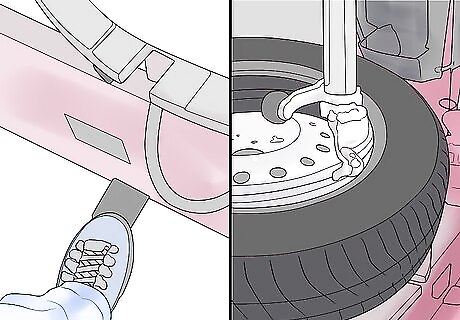
Press the pedal to rotate the rim and tire. As the two rotate, the mounting arm will force the bottom bead of the tire over the rim's top edge. Continue to rotate the two until they complete one full circle and the tire's bottom bead is entirely past the top lip of the rim. The tire will look like it's halfway mounted when you're done, with most of the tire on the rim. The tire's top bead will be all that stops it from setting all the way onto the wheel.
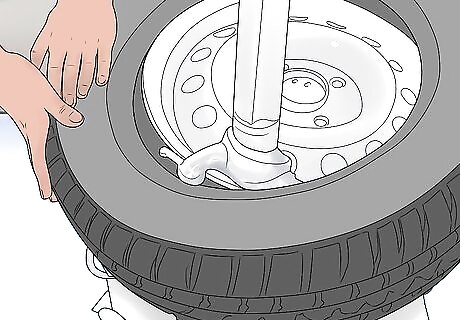
Reposition the mounting arm to guide the tire's upper lip onto the rim. Just like before, press one side of the tire down with your hands until it dips beneath the upper lip of the rim, then lower the mounting arm down onto the rim's edge in the space you've created by hand. You may need to use a pry bar to press the tire's top bead down over the lip of rim in that spot. The tire will once again sit at an angle once the mounting arm is lowered into place.
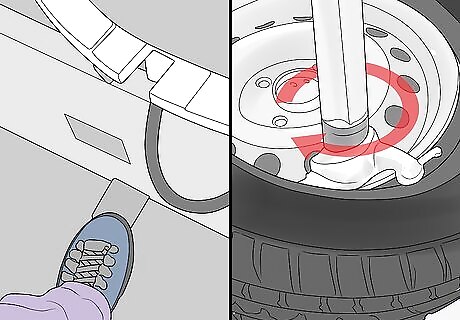
Press the pedal to rotate the tire and rim again. As the wheel and tire rotate, the mounting arm will now force the tire's upper bead down over the lip of the rim. Once you complete one full circle, both the tire's upper and lower beads will be passed the rim's upper lip. The tire is now effectively on the rim and just needs to be inflated.
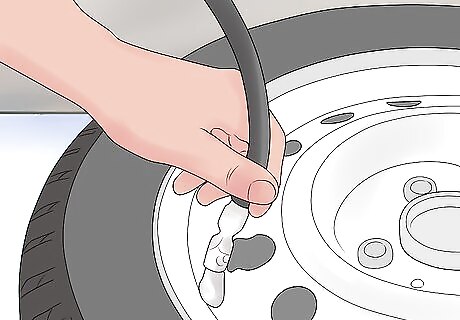
Inflate the tire with an air compressor. Connect the air compressor hose to the end of the valve stem you installed earlier, but make sure you get your hands and clothing completely clear of the tire before you turn the compressor on. Once you start the flow of air, the tire will rapidly inflate. Any piece of your body or clothing caught in the space between the tire bead and rim's edge will get pinched as the tire expands under inflation. Once inflated to the proper air pressure, the tire is mounted.
Mounting Tires by Hand
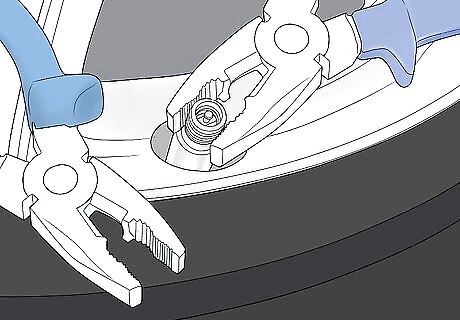
Insert the valve stem if there isn't one present. Lubricate the valve stem with a bit of tire lubricant, then press it into the hole on the inner portion of the rim where the tire will later cover. Next, take a pair of pliers and pull the valve stem outward from the hole. Be sure to pull the stem until it's snugly seated in its hole in the rim.
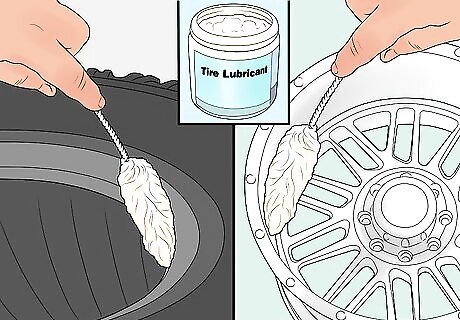
Lubricate the tire bead and rim. While tire lubricant is important for mounting tires with a machine, it's paramount when mounting them by hand. Apply lots of lubricant to the interior bead of the tire and the outer edge of the rim. Spray the lubricant on or apply it by hand. Make sure the entire top and bottom beads on the tire and entire edge on the rim are both well lubricated and reapply more lubricant as necessary.
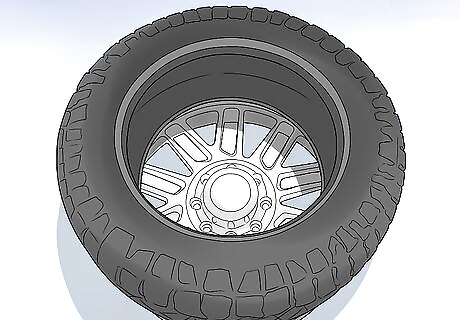
Lay the rim flat on the ground and place the tire on top of it. If the ground you're working on is blacktop or concrete, place a piece of cardboard beneath the wheel to avoid scratching it. Make sure the surface you work on is flat, even and stable. The tire will sit on top of the rim, with its bottom bead meeting the rim's upper lip. Unlike with the machine, try to make sure the tire sits on the rim flat.
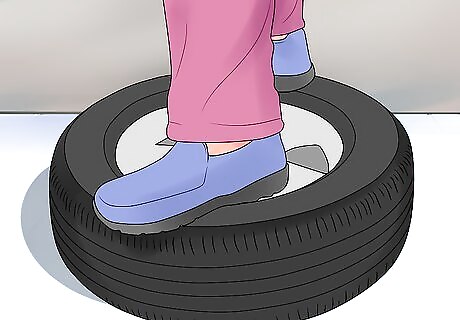
Step on the tire with both feet to press the lower lip onto the rim. Ask a friend to lend a hand for balance as you step up onto the tire on one side. Then bring your other foot up and apply pressure to the other side and force the bottom bead of the tire down over the top lip of the rim. You may need to hop a bit to apply enough downward force to push the tire bead over the lip. Do not do this without a friend to help with balance or you may fall.
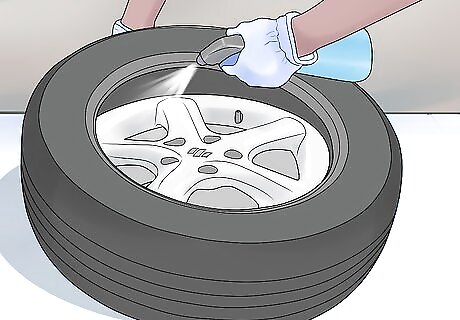
Add more lubricant to the upper bead on the tire as well as the rim. With the lower bead seated, the real challenge will be getting the upper one to follow suit. Apply more lubricant to help force the rubber down over the metal to make it a bit easier. The bottom bead won't need any more lubricant.
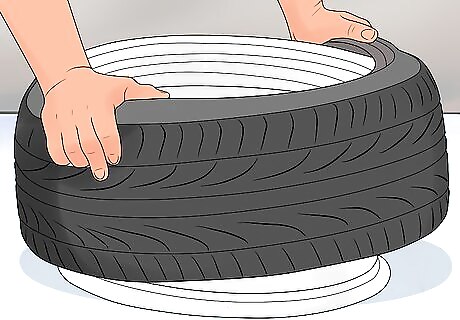
Press the upper lip of the tire down onto the rim on one side. Angle the tire so that one part of the upper bead is down below the rim's edge. Press down on the lower portion of the tire if it doesn't quite make it past the lip on its own. You'll need to create enough space between the upper bead of the tire and upper lip of the rim to slide a pry bar into the gap. You may even need to use the pry bar to create the gap. If so, keep it in place once you're done.
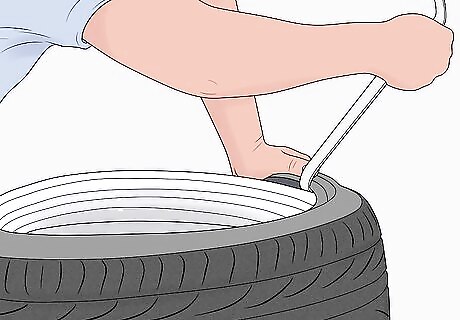
Use a pry bar to force the tire's lip over the rest of the rim. Move around the wheel, pressing down onto the tire with your hands and prying its bead over the upper lip of the rim. This will take a fair amount of work, but should be done by the time you make it all the way around the wheel once. Press the pry bar into the bottom side of the rim's upper lip, so it is not scratching any visible metal on the rim. When you make it all the way around the wheel, both the tire's upper and lower beads should be completely past the rim's lip.
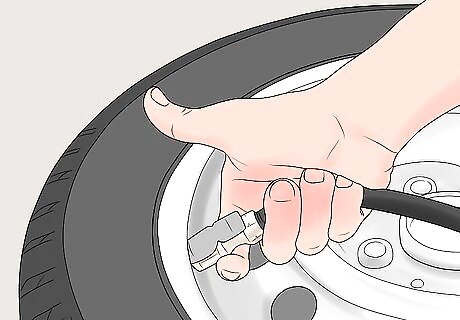
Inflate the tire with an air compressor. Once both beads of the tire are past the rim's lip, you can attach an air compressor to the valve stem and inflate the tire. Be sure to keep your fingers and clothing clear of the tire bead as the tire inflates. Once the tire is inflated, you can move on to the next one.















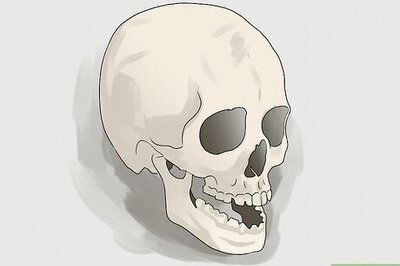

Comments
0 comment